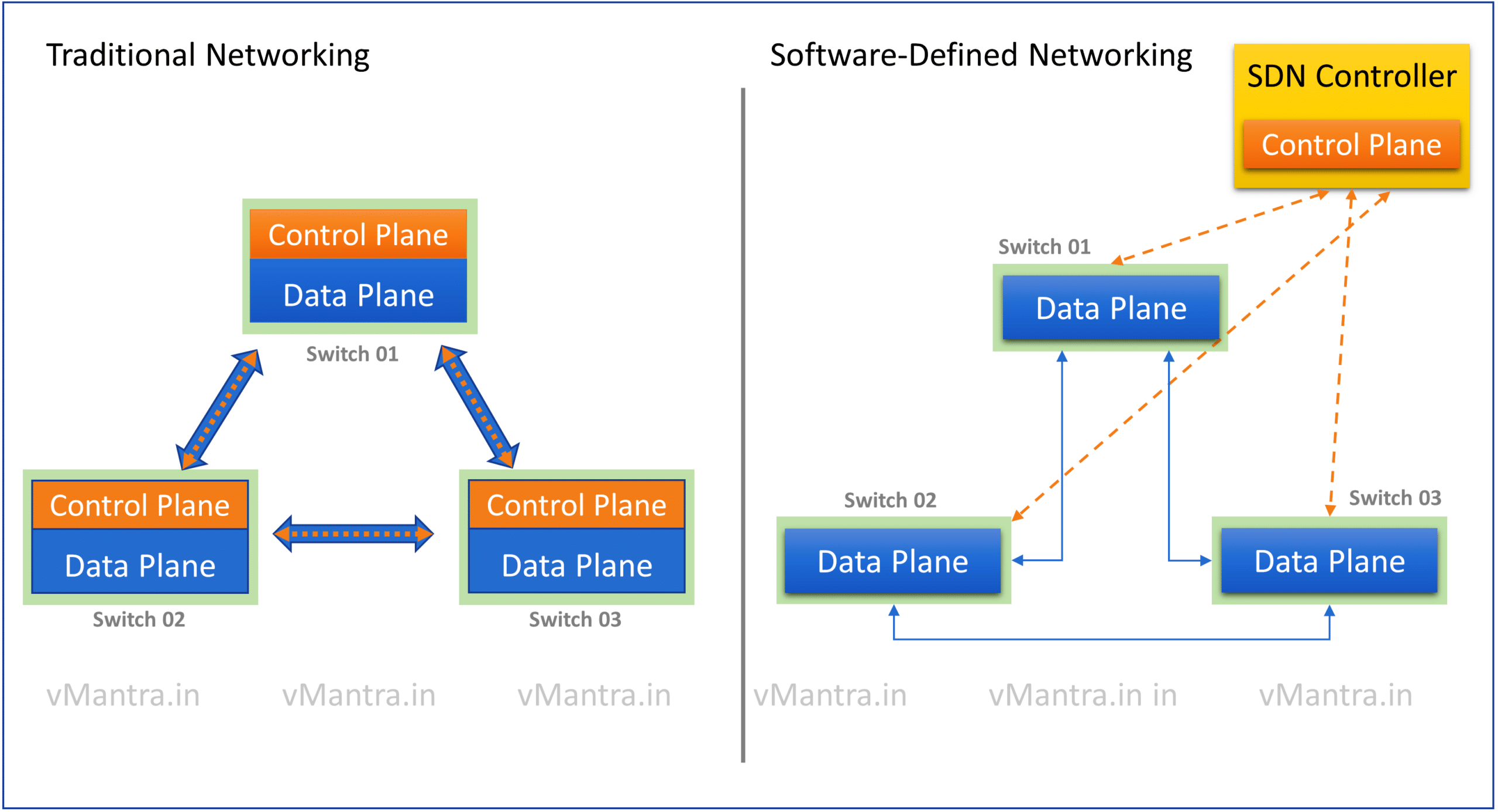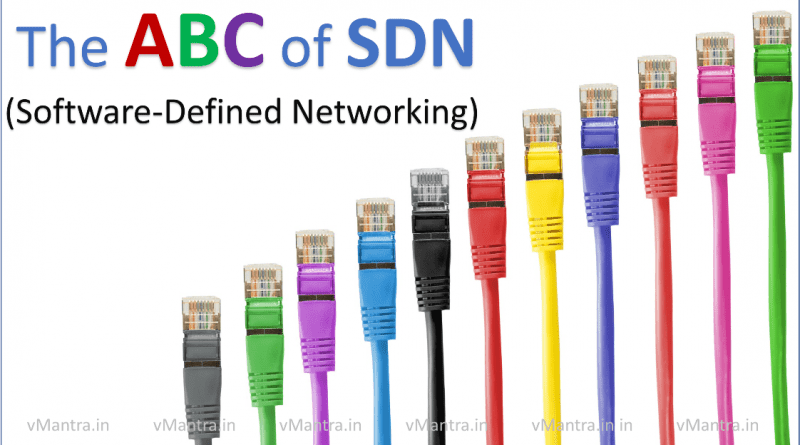The ABC of SDN (Software-Defined Networking)
If you are in IT or Telecom industry or have some interest in networking technologies, you must have heard of SDN or Software-Defined Networking buzz word many times in the last few years. But, have you ever thought why the SDN market is growing so rapidly and why organizations are spending so much money on this? The answer to this question is the current market needs. As the application behavior and requirements are changing, the networking is also changing.
In this era of 5G, Cloud Computing, IoT, AI, AR, and Self-driven cars there is no room for high latency, low bandwidth, and a slow legacy network configuration approach. For this reason, The organizations need a network technology which is faster, agile, flexible, automated and should be vendor agnostic. Therefore, Software-Defined Networking (SDN) is something which fulfils all the networking needs of today’s industry.
In this blog, I will try to explain the ABC of SDN (Software-Defined Networking).
Limitations with Traditional Networking:
Basically, in Traditional network, the network device (like a router) has two main functions inside called 1. Control Plane and 2. Data Plane or Forwarding Plane.
Control Plane is considered as the ‘brain’ of the network as it controls and decides the route of data traffic based on the routing protocol (eg. OSPF, BGP etc.) and send the instructions to Data Plane. Whereas, Data Plane takes appropriate actions on the basis of instructions received from Control Plane and forwards or block the data packets on the given interfaces.
In the Legacy Network, each of Networking device has its own Control plane and Data planes. It means, if there are, for example, 100 Network elements (eg. Like router), there would be 100 Control planes and 100 Data planes. To configure or to make a small modification in that network an engineer needs to login to each of 100 devices and run the commands.

What is SDN (Software-Defined Networking)?:
As the name suggests, Software-Defined Networking or SDN is a computer networking technology in which a software controls the entire network using OpenFlow (or same kind of) Protocol. In other words, The Control Plane is decoupled from a physical network element and installed as a software on Linux, x86 hardware-based virtualized or cloud platform like OpenStack, VMware vSphere, AWS etc. In that case, a single (or a cluster of) Control Plan software installed centrally, can handle the communication of all the Data planes of all networking elements ( in this example 100 elements), however for better performance and high-availability purpose generally it is recommended to deploy three SDN Controllers in a network.
Other than this fundamental approach, SDN is leveraged with native software benefits like it can communicate to other programming languages using API and welcomes the network Automation and orchestration.
Top Providers/vendors of SDN:
Following are the top vendors of the current industry who provides reliable, scalable and robust SDN solutions:
- VMware NSX
- Cisco ACI
- Arista Networks
- Nokia Nuage Networks
- Juniper Networks
- BigSwitch Networks
- Cumulus Networks
- Pluribus Networks
- Pica8 Networks
For more information about each solution, please go through my previous blog “Top SDN Vendors and their Solutions“.
How it is Different from Legacy Networking?
Each element of the Legacy network comes as an independent entity and has all Management, Control Plane, Data Plane, and their own Proprietary (or Linux) Operating System in a single box. That makes them expensive. Also, in case of minor hardware failure, replacing that element means replacing all major components (Management, Control Plane, Data Plane, and OS) along with loss of configuration as well.
Whereas, In the case of Software-Defined Networking (SDN), replacing the HW element means replacing Data Plane only. Also, Software-Defined Networking (SDN) makes the upgrade too easy and increases productivity by reducing downtime. As already described, Legacy network devices need to be configured one by one by logging in to each node. In SDN, all the configuration is done only on one single portal, and that profile can be pushed to selected network nodes manually or using an orchestrator. It reduces the time spent on the configuration and minimizes the risk of configuration errors.
Benefits of Software-Defined Networking (SDN) over Legacy Networking:
The reason why companies are adopting SDN over the legacy network is the benefits of SDN over Legacy Network, some benefits are given below:
- Centralized Management
- Vendor agnostic
- Less TCO
- Less OPEX
- Supports Automation
- Less time to production
- Innovation friendly
- Scalability
- Flexibility
- Programmable Networking Environment
Overall, the advantages of Software-Defined Networking (SDN) over the legacy network are numerous. Along with cost savings and improved performance, It also offers better flexibility and scalability to meet changing business requirements. The ability to customize networks for customers is also a key advantage. By taking advantage of SDN over the legacy network, organizations can streamline their networking operations and achieve better overall performance.
Challenges for SDN in the Market:
Whenever we adopt new changes, we have to be ready for new challenges. Software-Defined Networking (SDN) gives wings to the network service providers, but on the other hand, it does not support old/outdated hardware and requires the latest hardware that supports OpenFlow. It indicates that to enable Software-Defined Networking (SDN), a service provider needs to make an enormous investment in the new hardware. This time when computer network technology is more than 40 years old, and organizations have already made a huge investment in traditional network equipments, assigning more budgets to SDN is surely a challenge.
Another obstacle is to find competent people, as the technology is new and every vendor has its own product and solution with a different approach, it’s hard to find competent resources.
In conclusion, SDN provides a range of advantages over traditional network architecture. It has been able to reduce overall costs and increase flexibility while allowing companies to experiment with new technologies and configurations.
Thanks!!
Check out some more blogs:
- Configuring AWS Greengrass Core on VMware vSphere
- Deploying AWS Greengrass on VMware vSphere
- VNF Manager vs NFV Orchestrator (VNFM vs NFVO)
- Network Functions Virtualization (NFV)
- What is Hyper-Threading?
- Virtual Networking in VMware Workstation
Eventually, If you like my blog “The ABC of SDN, Please Share…
–




